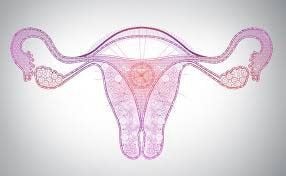Nội dung bạn đang tìm kiếm không có phiên bản tiếng Việt.
Vui lòng chọn tiếp tục để xem nội dung tiếng Anh hoặc đi đến trang chủ Tiếng Việt.
Rất xin lỗi về sự bất tiện này.
Women's Health Center


Bleeding During Labor and Delivery: Key Information for Mothers
When a mother experiences hemorrhage (bleeding) during labor, it may represent significant clinical signs to her overall health and life-threatening warning and needs to be treated immediately. Bleeding can be classified into three periods: before, throughout labor, and after birth.
View more

What problems does severe pain in the lower abdomen warn of?
Using the navel as a reference point, the abdomen is divided into four positions: epigastric (above the navel), hypogastric (below the navel), left iliac fossa (to the left of the navel), and right iliac fossa (to the right of the navel). When experiencing lower abdominal pain (hypogastric pain), depending on the severity of the pain and symptoms, it can be a mild illness or an emergency, so when experiencing severe pain in the lower abdomen, it should never be ignored or taken lightly.
View more
Latest articles

Nabothian cysts of the cervix: When is treatment necessary?
Nabothian cysts are small growths that form on the surface of the cervix. The cysts are mostly small and benign, and if they are small, they may resolve on their own. Treatment for nabothian cysts may include medication, aspiration of the fluid, or cauterization of the cysts.
View more

Why do pregnant women need to get tetanus vaccine?
During pregnancy, it is crucial to maintain a scientific lifestyle and follow a suitable diet. Additionally, vaccinating both pregnant women and fetuses is very important, especially with tetanus shots.
View more

Overcoming postpartum dizziness
Dizziness after giving birth is a condition that many mothers experience. This can be an early warning sign of many dangerous diseases, so it needs to be examined, diagnosed early and treated to avoid the risk of accidents, injuries or health effects later.
View more

Why Should Pregnant Women Supplement with Magnesium?
Magnesium plays a crucial role in bone formation and in the metabolism of proteins and fatty acids, helping pregnant women alleviate fatigue, weakness, and pregnancy-related obesity.
View more

Symptoms of Uterine Fibroids
Uterine fibroids are a common gynecological condition in women. The name may sound frightening, but in fact, fibroids are generally benign and not cancerous. The symptoms of uterine fibroids mainly depend on the location and size of the fibroid. Therefore, if the fibroid is small or deep within the uterine wall, a woman may not feel anything. However, it is important to know the signs of uterine fibroids below to detect them early and intervene to prevent future complications.
View more

What is an Incomplete Miscarriage?
An incomplete miscarriage, also known as an incomplete abortion, is a condition where a miscarriage occurs, but part of the fetus remains in the uterus. During a vaginal examination, blood is seen flowing out with the examining’s finger.
View more

What are the signs of ovarian inflammation?
Ovarian inflammation is a rare but serious gynecological disease, with the risk of long-term effects on fertility in the future. The most common causative agents are bacteria, especially sexually transmitted strains. The treatment is really simple if detected early and properly intervened in time.
View more

Fever after cesarean section: What you need to know
Fever after a cesarean section is defined as a fever of 38°C or higher occurring more than 24 hours after surgery. This symptom can be caused by various factors with varying severity
View more

